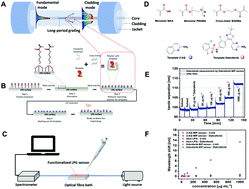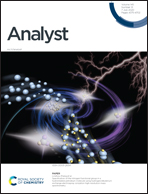Surface polymer imprinted optical fibre sensor for dose detection of dabrafenib
Abstract
Dabrafenib is one of the most widely used of the new generation of targeted anti-cancer drugs. However, its therapeutic window varies for different patients and so there is an unmet need for methods to monitor the dose of drug which the patient receives and at the specific site where it acts. In the case of cancers, it is critical to measure the concentration of drug not just in the bloodstream overall, but in or near tumours, as these will not be the same over multiple time periods. A novel sensor based on an optical fibre long period grating (LPG) modified with a molecular imprinted polymer (MIP) has been developed with the ultimate aim of achieving minimally invasive measurements of Dabrafenib at the tumour site. A molecularly imprinted polymer specific for Dabrafenib was coated on a methacryloylalkoxysilane-functionalised optical fibre long period grating. In vitro experimental results demonstrate that the Dabrafenib sensitivity is 15.2 pm (μg mL−1)−1 (R2 = 0.993) with a limit of detection (LoD) of 74.4 μg mL−1 in serum solution. Moreover, the proposed sensor shows selective response to Dabrafenib over structurally similar 2-Aminoquinoline.



 Please wait while we load your content...
Please wait while we load your content...